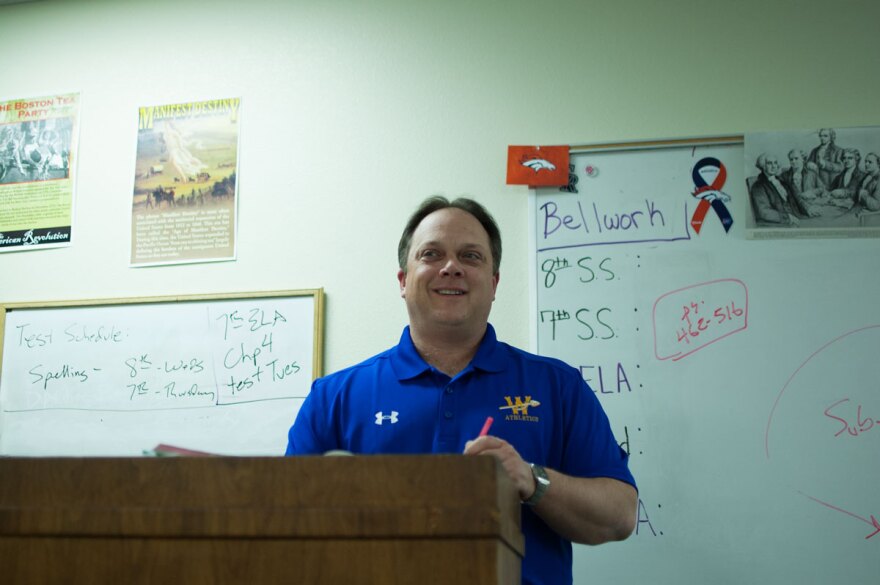If you heard that 12 people were living together in a two-bedroom apartment, you might think they were a group of college students, not teachers in the Roaring Fork School District.
“They love teaching in the community, they love working with the students there, but they simply cannot afford housing,” says Amie Baca-Oehlert, Vice President of the Colorado Education Association.
Roaring Fork is in Glenwood Springs, where the median home price is more than $536,250 dollars. The mountain town’s rental scene is also extremely tight and pricey. But it’s not just there. Baca-Oehlert says she hears stories like this all the time.
“This impacts all communities, whether it be here in Denver where it’s very hard for somebody on a teacher’s salary to afford to live in Denver, but it also affects our communities all across the state,” she says.
The real estate website Trulia recently ranked Denver as one of America’s least affordable cities for teachers. While rent and home prices are comparably lower in more rural parts of the state, they’re sometimes not low enough for teachers. Also, other consumer costs can be higher -- the price of gas, utilities, groceries or even entertainment.
“I believe it is a myth that the cost of living is that much less in rural Colorado than it is in the metropolitan areas of Colorado,” says Michael Schmeeckle, an English and social studies teacher for the Weldon Valley School District in Weldona.
Weldona is about an hour east of Greeley. But Schmeeckle lives in Fort Morgan, and commutes about 15 minutes to work. For him, it was about coming home.

“You know, I grew up in the community, my family’s in the community. I enjoyed small town living,” he says.
But Schmeeckle makes his situation possible by supplementing his teaching salary by renting out property. Even he points out that homes in Fort Morgan -- valued on average at $221,000 -- are out of reach for many educators.
According to a 2013 report by the National Education Association, Colorado’s average starting salary for teachers is $32,126 a year. State data shows wages in some districts are even lower. For example, three out of five districts in Washington County pay around $28,000 a year. Median home prices there are very close to those of Portland, Oregon -- one of America’s most expensive cities.
“There’s benefits and challenges about living in some of these more rural districts,” says Megan Quitter, the Rural Education Coordinator for the University of Northern Colorado.
Quitter’s job is to convince soon-to-be teachers to live and work in Colorado’s more remote districts. But she can’t deny that when it comes to pay and the cost of living, there’s almost always a trade-off.
“They’re beautiful and they have a strong community but they also might be further from a hospital, or gas prices might be higher, grocery prices might be higher,” she says. “Often the rural districts pay less than other districts and so you have to find the right match.”
Every two years, the Colorado legislature is required to commission a cost of living study for all 178 school districts in the state. This information is used to calculate state education funding. The latest study, released last year, showed that those living in rural districts paid higher consumer expenses in nearly every category -- healthcare, groceries, entertainment, you name it.
"Often the rural districts pay less than other districts and so you have to find the right match."
The yearly cost of living for teachers in Weldon Valley is $48,069. By contrast, the average salary at Weldon Valley is $35,175. That disparity may seem large, but consider one of Colorado’s more expensive areas, like Aspen. The cost of living there is $90,840 a year. The average teacher salary in that district is $56,776. Meaning it isn’t just a rural problem.
“Teachers are being displaced,” Quitter says. “They can’t afford to live in the area where they need teachers. We have a lot of expensive resort communities, and the teacher salaries don’t match the housing costs in a lot of the areas.”
She points to one solution: housing assistance. A handful of districts either offer teachers stipends towards housing, or buy up property to rent to teachers at a discount. Districts like Roaring Fork, Aspen and Woodlin have all incorporated housing assistance into their future plans.
Quitter says that while there’s a national teacher shortage, Colorado ranks near the bottom when it comes to teacher salaries. And over the past decade, teacher pay has also declined by 7.7 percent, according to the National Education Association.
For Baca-Oehlert, teacher pay collides with another sore spot for Colorado: school funding. “We advocate for increased school funding because right now, it is not meeting the needs of students or of districts to be able to attract and retain quality educators,” she says.
This year, schools across the state are bracing for even further cuts to state funding. That’s thanks to something called the “negative factor.” It’s a budgeting tool that allows the state to pay schools below the amounts required by law. It’s been in use since 2009. This year, it cost schools more than $830 million. Next year, it’s projected to grow to $879 million.
A bill awaiting Gov. John Hickenlooper’s signature would order state agencies to conduct a comprehensive study of the teacher shortage, and present the legislature with findings by December 1.





